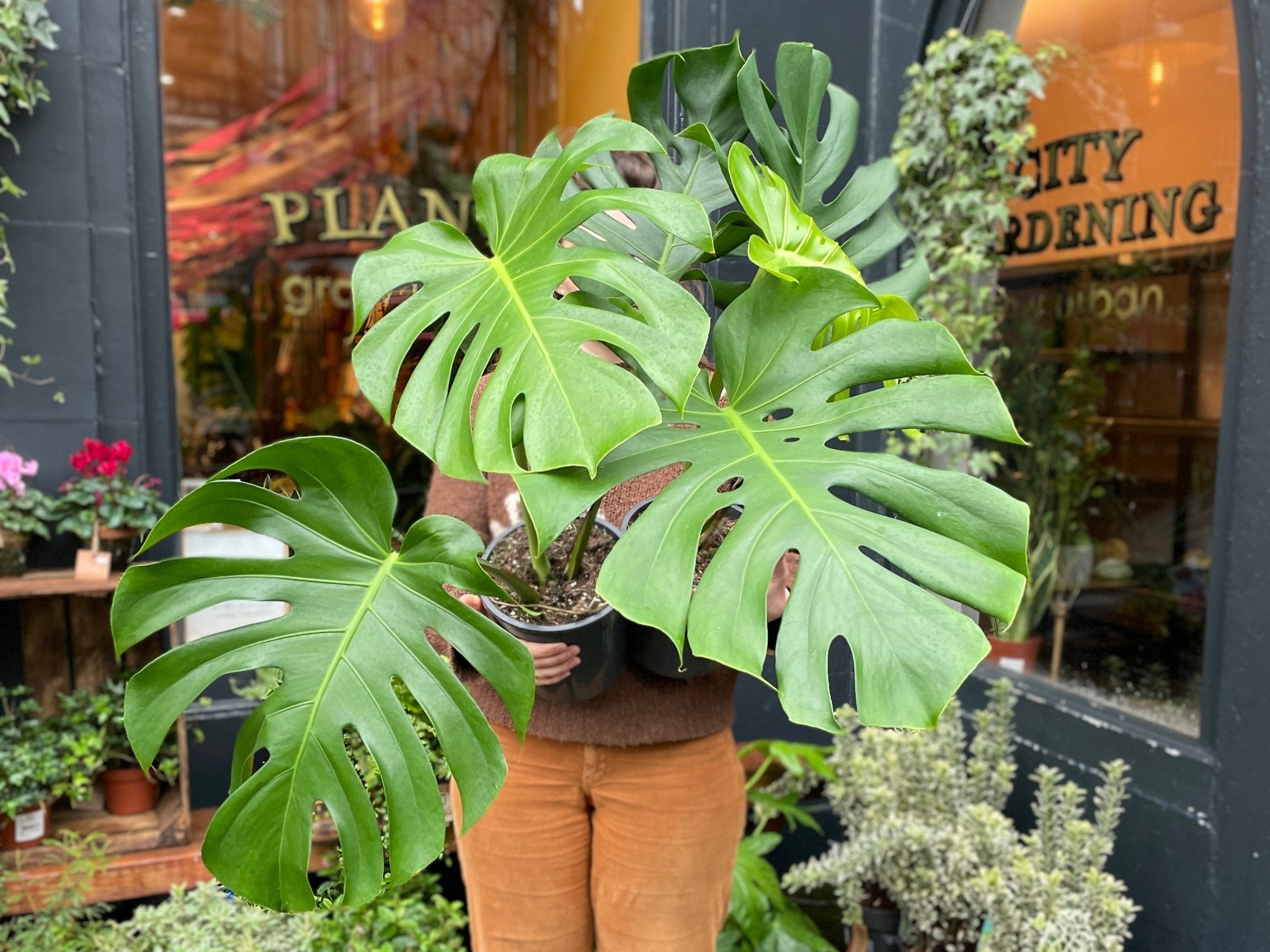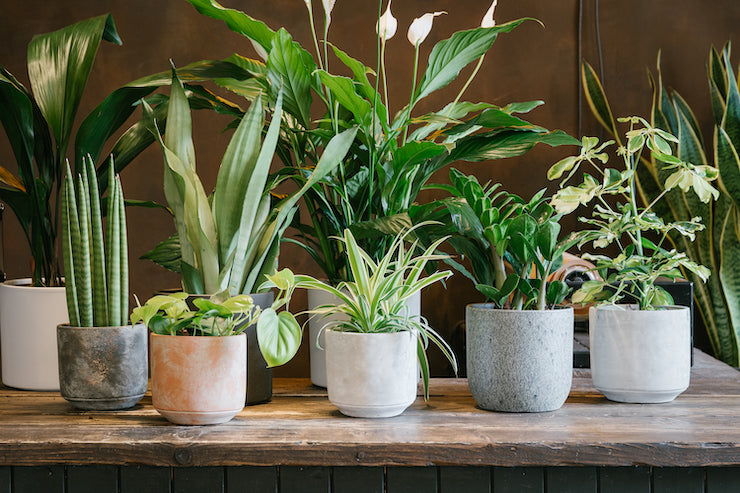
Care Guide: Monstera Deliciosa
A real 70s classic, Monstera are part of the Arum family and come in a plethora of forms. Most favoured is the Monstera deliciosa which this blog will be focusing on, however there are many other rare forms such as the Monstera dubia and Monstera esqueleto. If you are looking for an easy-care option with large, lush leaves look no further than this fabulous genus!
Monsteras are native to Southern Mexico. They can be found growing in tropical rainforests and produce chunky aerial roots to clamber high up tree trunks on a mission to reach more light. In their natural habitats, these monstrous plants can reach heights of up to 20 metres, but are likely to get no larger than 2 to 3 metres in our homes.
The name Monstera comes from the latin ‘Monstrum’ meaning monster due to its sprawling nature and huge leaves. Deliciosa refers to the tasty fruits these plants produce which are said to taste like a mix of banana and pineapple.
General Care for Monstera deliciosa
Monstera thrive in bright, indirect light and can withstand some direct light in the morning and evenings. They should be watered when the top two inches of soil dry out. This is usually every 10 to 14 days in the spring and summer, but often much less in the autumn and winter when the days shorten and the temperatures drop. These plants also benefit from their leaves being dusted with a damp cloth to remove any dust to allow for optimum levels of photosynthesis. It is best to feed your Monstera in the growing season in the Spring and Summer months every 2 weeks. We recommend Liquid Gold Leaf which is a great high-quality houseplant feed, alternatively you can use Houseplant Focus 300ml. This is also the time of year to check if your plant needs re-potted. Check for roots coming out of the drainage holes at the base of the pot or densely spiralling at the base of the compost inside the pot. This is a sign your plant has run out of growing room. Due to their fast-growing nature, these plants usually need re-potted once a year using a mix of 50% Soil.Ninja Base Mix, 30% Grit, 20% Sand and 10% Zeolite. Alternatively, use a basic houseplant compost like Houseplant Focus 3L, but ensure you add 20% Perlite to 80% compost for adequate drainage.
These monstrous plants have a sprawling nature and Coir Poles are commonly used to tame them as they mature. It is easiest to install coir poles in the base of the pot when repotting to prevent root damage. To secure the plant to the coir pole we recommend using Mossing Pins for a more discreet look, however Twine can also be used. When misting your plant, we recommend misting the coir as this encourages the plant to grow closer to the moist surface.
Alternatively, let them grow wild!
FAQs on caring for Monstera deliciosa in the UK
1 Why is my Monstera Deliciosa not producing fenestrations (holes in the leaves)
This is often not your error, but how the plant was propagated for sale. Growers will have mother plants at different points in their life cycles. For example, plants propagated from young Monstera will grow smaller leaves with few fenestrations and will take longer to grow large, fenestrated leaves. Whereas, leaf cuttings taken from mature plants with large leaves will continue to produce larger fenestrated leaves. This is often why plants with 2 or 3 large, fenestrated leaves are more expensive than plants with lots of unfenestrated leaves.
Have patience! To encourage large, healthy future growth keep your Monstera in lots of bright, indirect light and check often for watering as discussed in the care section. Also, keep on top of giving your plant nutrients in the spring and summer and make sure to check for signs that the plant is ready to be repotted!
2 Why are the leaves yellowing on my Monstera?
Yellowing leaves is a common sign of over watering. We recommend allowing the top two inches of soil to dry out between waterings. The best way to check this is by sticking your finger into the compost every 10 days to check the moisture level of the soil. If those top two inches do not feel completely dry or you are unsure, leave the plant for a couple of days more. It really is better to underwater houseplants than it is to overwater them! In the autumn and winter, when the days are shorter, the soil can take around 2 to 3 weeks to be sufficiently dry.
When watering your Monstera, always remove the plant from its decorative pot and add water until it begins to drain out of the holes in the base of the nursery pot. Once fully drained, place the plant back in its decorative pot. Soft black patches can also appear on leaves due to overwatering.
3 Why do my Monstera leaves have brown and crispy sections?
Brown and crispy sections on Monstera leaves can appear as a result of several different factors. Browning, crispy edges are usually due to a lack of humidity so make sure to mist the leaves with water in a spray bottle at least once a week. Position the plant away from any heat sources like radiators and fireplaces as these will dry out the air. Brown patches can also be caused by too much direct sunlight which causes the leaves to scorch, so make sure your plant is positioned in a bright spot but away from south facing windows. Finally, brown patches can be caused by under-watering so make sure to check the compost more often and remember that compost will dry out quicker in warmer weather!
Check out our website or visit one of our shops to peruse our selection of Monstera.



